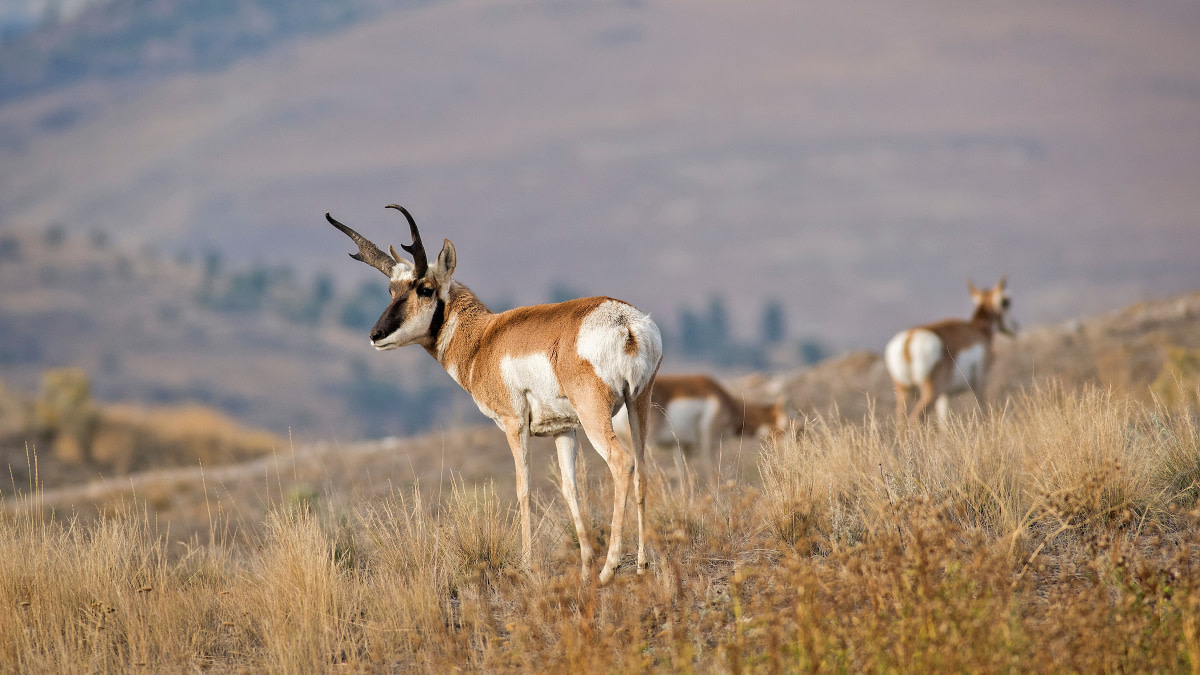
Much of the Western hunting craze focuses on elk, mule deer and, now more than ever, whitetails. This is one of the reasons that tags for those critters have become harder to come by, and why antelope opportunities have stayed relatively reliable. Barely ranking above prairie dogs for most hunters as a reason to point pickups toward the setting sun, antelope just don’t get a whole lot of love. But they should.
There’s no critter that’s quite as visible (or accessible) on public lands. There’s also no hunting opportunity that serves as a better gateway to all things Western than the antelope. Plus, after a successful hunt, you’ll be treated with a bounty of extremely delicious, underrated meat.
Sound like something you’re interested in? Here’s how to kill a speed goat with your bow.
Licenses
Several states will sell you a nonresident over-the-counter antelope license, but don’t plan on walking into a Walmart to get it. Order your tag online weeks before you set out so you’re not scrambling to find a license-seller after 12 hours of windshield time.
Once you’re legal, you’ll need to do some aerial research. Antelope like huge expanses of grasslands, so start there. Look for National Grasslands, BLM parcels or any tract of public land that stretches for miles between boundaries.
As you take in the satellite view, look for spoked-out cattle trails leading to water sources. Guzzlers, bubblers and small ponds are your friends. Whether you plan to ambush an antelope via a blind or spot-and-stalk your way across the countryside, you’ll want to know where the water sources are. You’ll also want to mark spots where you might be able to achieve a little elevation to let your spotting scope do the walking.
Waterhole Hunting Pronghorn
Few bowhunters are more obsessed with antelope than Jace Bauserman: He literally wrote the book on it. Bauserman is a Southern Colorado native who spends more time scouting antelope than most hunters actually spend hunting. When it comes to a sure(er)-thing, he advises new pronghorn hunters to scout—and hunt—water.
Many hunters, however, make the mistake of haphazardly throwing up ground blinds too close to the water. If you want to make a set within 20 yards of where they’ll be drinking, you’ll need plenty of concealment. This isn’t turkey hunting where a ground blind on a field edge will fool even the wisest of toms.
If you don’t have anything to brush-in the blind, either set up beyond 30 yards or look for manmade structures. Getting further away from the water will help put wary goats at ease, but you can close that gap when hunting around farm equipment.
“If the tank has some sort of well head, busted corral, or windmill parts, you’re in business,” Bauserman said. “For some reason, antelope are super tolerant of a new blind showing up next to objects they’ve looked at for years in a given spot. In that way, they don’t really need to be blended in all that well, just pushed up against something they are familiar with.”
Spot-And-Stalk Hunting Pronghorn
If waiting for antelope to come to you isn’t exciting enough, then you can go to them. Spot-and-stalk hunting on the prairie is a rush, but it’s also one of the most difficult things a bowhunter can attempt. In my experience, any chance of getting bow-close involves finding an antelope in stalkable terrain and then immediately going for it.
Bauserman agrees, and says hunters should feel a sense of urgency when they find a goat in a good location.
“Antelope are unreliable. They might bed for 15 minutes and then get up for no reason and walk a mile,” Bauserman said. “Or they might bed at first light and stay there for six hours. The point is, you can’t treat them like mule deer. When an antelope beds, the clock is ticking. You’ve got to read the terrain quickly and decide if there is a way to get close.”
The good news is that you can afford to be aggressive. If you blow a stalk—and you will—just know that there will be other opportunities. It would be a mistake to commit yourself to one antelope.
“You shouldn’t get too hung up on a particular antelope if he’s not giving you a chance,” Bauserman said. “Move on, find one bedded somewhere else and start crawling. If you manage to get within 70 yards, take the first decent shot you can. You probably won’t get much closer.”
Decoy Hunting Pronghorn
If blowing stalk after stalk starts to wear on you, then consider trying some visual trickery. It’s hard to beat decoying in September when bucks are actively rounding up harems of does while running off young bucks.
CJ Davis, president of Montana Decoy, warns that not every situation is right for decoys, though. To make decoys consistently work, you need to wait for the ideal scenario.
“If you see an antelope running off younger bucks, figure out a way to slip in to 300 yards or less,” Davis said. “When you get the chance, pop up the decoy and get ready. He’ll think another youngster has crept in too close without him knowing and often he’ll immediately react to the challenger and sprint in.”
Basically, don’t expect any kind of a response when you throw up a decoy at 600 yards. Antelope have good enough eyesight to see you, but won’t bother leaving a harem to challenge a goat from that distance. You need to make the buck think you’re a threat.
No matter what method you choose, if you’ve got the itch to hunt the West but don’t have the confidence or budget to go after the biggest of big game, then consider an antelope trip. You’ll find plenty of opportunity on public lands and you just might realize that you don’t need bugling elk to have a really good time.
Feature image via John Hafner.





